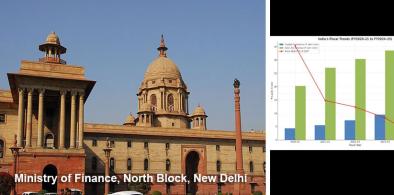Can India's looming power crisis impact Indian economic revival?
India’s energy problems, however, are not unique as its powerful neighbor, China, too, is experiencing serious shortages of electricity, writes N. Chandra Mohan for South Asia Monitor

The nascent recovery in the India growth story might well be halted in its tracks by blackouts as thermal power plants run out of coal supplies. Thermal power provides 84 percent of electricity generation while coal accounts for 55 percent of total energy consumption.
True to form, the Modi government denies any coal shortage, just as it did for scarce supplies of oxygen and vaccines earlier this year. But that hasn’t prevented high-level meetings in the Prime Minister’s Office (PMO) to respond to a serious problem confronting 106 thermal power plants with a capacity of 132 Giga Watt or 56 percent of installed capacity with either no stocks, or those lasting only for 7 days.
India’s energy problems, however, are not unique as its powerful neighbor, China, too, is experiencing serious shortages of electricity. Heavy rains and flooding have led to a temporary shutting down of coal mines in Shanxi province that accounts for one-third of the nation’s coal output. Price of coal has surged to record highs.
Even before the rains, China has been facing blackouts as the authorities allowed coal stocks to dwindle as it is pushing renewables in its quest for carbon neutrality by 2060. Heavy rains impacted India’s coal supplies from Kalimantan in Indonesia, sending prices up from USD 60 a ton in March to USD 160 a ton in September-October.
Excess rains similarly affected India’s coal mining belt in September. But a more important factor behind the shortages is the failure to build up stocks to fuel the economy’s recovery as it emerged from the partial lockdowns in April-May to combat Covid-19.
Power consumption as economic indicator
Power consumption is a major indicator of economic revival. In line with the sharp rebound in GDP growth during Q1 2021-22, power consumption rose in tandem by 41 percent year-on-year in April, declined in May and started to steadily climb sequentially from June till August. During April-September 2021, power consumption was up by 4 percent over pre-Covid-19 levels in April-September 2019.
While power demand rose following an upturn in economic activity, thermal power plants did not build stocks before the onset of the monsoon. To be sure, they had good reasons to do so as there was greater reliance on domestic coal-based generation due to the spike in Indonesian coal prices that led to a substantial reduction in power generation from imported coal-based power plants.
There is also a logistical failure on the part of Coal India Ltd, the main supplier to thermal power plants, to evacuate and transport coal supplies through rail from pitheads to power plants. CIL has indicated that it will ramp up supplies post-Dussehra to meet demand of power plants.
Over the short term, the solutions to tide over the looming power crisis will only send electricity prices sharply up. The government has now mandated thermal power plants to import costlier coal to blend 10 percent with domestic supplies. This represents a U-turn from its earlier stance to dissuade plants from the import option and rely on domestic supplies. Power distribution companies or discoms are also reportedly resorting to panic purchases from electricity spot markets at record high rates of INR 15.85 to 20 per kilowatt hour. The government has sternly warned states to not profiteer by selling at the exchanges at inflated rates.
Power discoms
But a more sustainable fix is to put the power discoms on a stable financial footing. They are the weakest link in India’s power sector, consistently making huge losses of an estimated INR 750 billion in 2021-22, according to the rating agency ICRA. The debt on the books of state-owned discoms will also reach close to INR 6 trillion. Such a high level of liabilities, including dues to the power generating companies, is unsustainable. While the government states that it has incentivized the discoms to transform, reform and perform, they are unable to do so as electricity tariffs are politically determined.
The agricultural sector does not pay for its power, while households and industry bear a higher tariff burden. The huge gap between average cost of supplies and average revenue realized is largely why discoms bleed heavily.
This factor was alluded to by the government when it stated that there are also legacy issues of heavy dues of coal companies from certain states like Maharashtra, Rajasthan, Tamil Nadu, Uttar Pradesh, Rajasthan and Madhya Pradesh.
Coal supplies have been impacted as discoms have delayed or defaulted on payments to power generating companies who in turn have difficulty in paying for coal supplies. Unless timely payments are made to CIL, exhorting it to step up output may not be enough. CIL’s receivables amounted to a massive INR 200 billion as of March before coming down to INR 171 billion in end-July, according to the Financial Express.
Unless these issues are addressed, the power crisis will dampen the revival of the Indian economy and impact Indian industry just recovering from Covid-induced losses. This will imperil regaining the pole position as the world’s fastest growing large economy, as the IMF has predicted.
(The writer is an economics and business commentator based in New Delhi. The views expressed are personal. He may be contacted at nchandramohan@rediffmail.com)




















Post a Comment